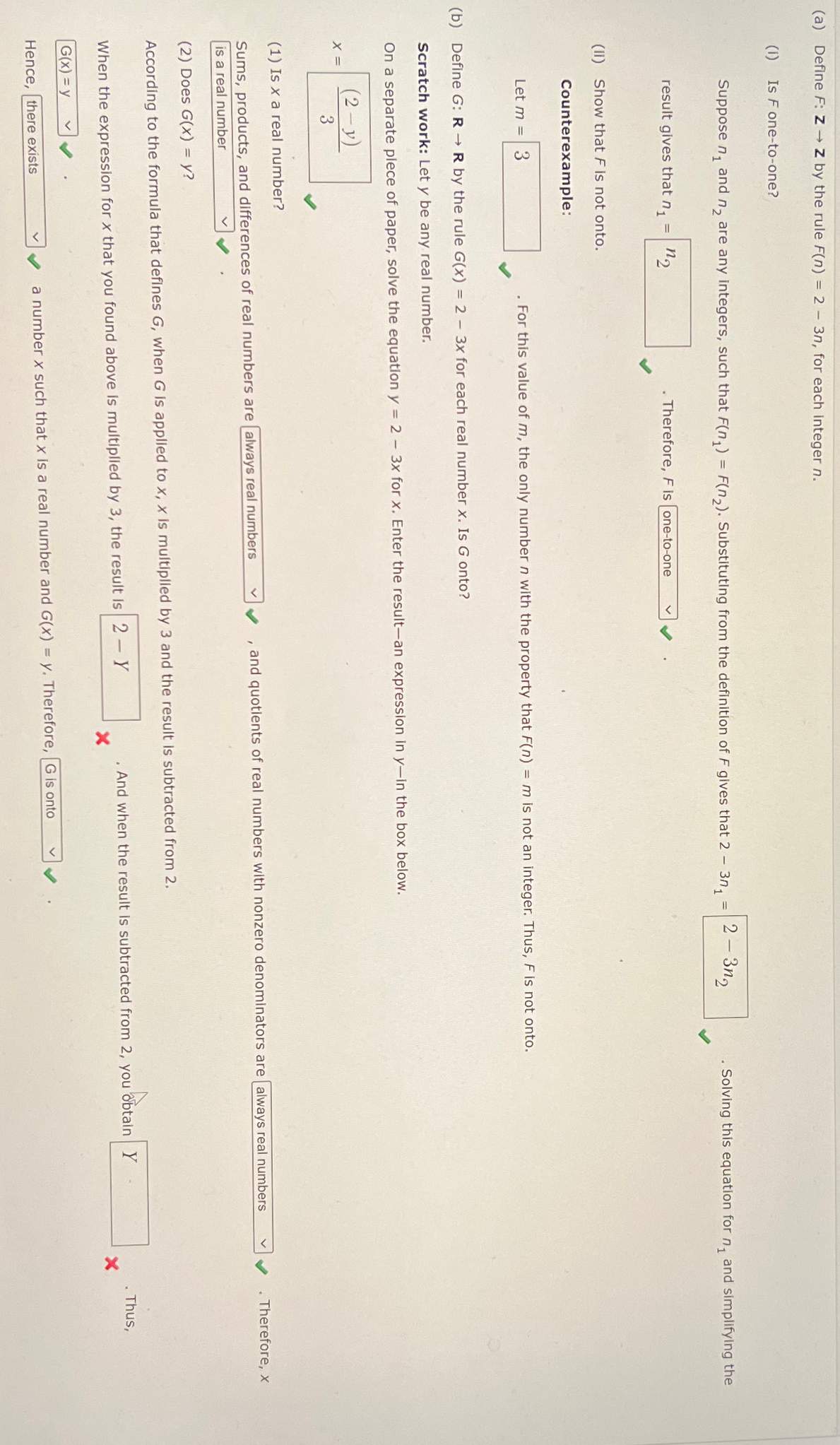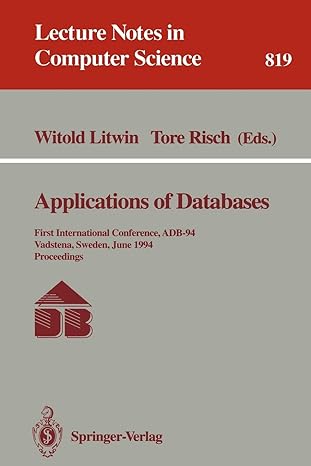Question
(a) Define F:z->Z by the rule F(n)=2-3n , for each integer n . (i) Is F one-to-one? Suppose n_(1) and n_(2) are any integers, such
(a) Define
F:z->Zby the rule
F(n)=2-3n, for each integer
n.\ (i) Is
Fone-to-one?\ Suppose
n_(1)and
n_(2)are any integers, such that
F(n_(1))=F(n_(2)). Substituting from the definition of
Fgives that
2-3n_(1)=\ . Solving this equation for
n_(1)and simplifying the result gives that
n_(1)=. Therefore,
Fis\ (ii) Show that
Fis not onto.\ Counterexample:\ Let
m=. For this value of
m, the only number
nwith the property that
F(n)=mis not an integer. Thus,
Fis not onto.\ (b) Define
G:R->Rby the rule
G(x)=2-3xfor each real number
x. Is
Gonto?\ Scratch work: Let
ybe any real number.\ On a separate plece of paper, solve the equation
y=2-3xfor
x. Enter the result-an expression in
y-in the box below.\
x=\ (1) Is
xa real number?\ Sums, products, and differences of real numbers are , and quotients of real numbers with nonzero denominators are always real numbers
. Therefore,
xis a real number\ (2) Does
G(x)=y?\ According to the formula that defines
G, when
Gis applied to
x,xis multiplied by 3 and the result is subtracted from 2 .\ When the expression for
xthat you found above is multiplied by 3 , the result is\ . And when the result is subtracted from 2, you obtain . Thus,\ Hence,\ a number
xsuch that
xis a real number and
G(x)=y. Therefore,

Step by Step Solution
There are 3 Steps involved in it
Step: 1

Get Instant Access to Expert-Tailored Solutions
See step-by-step solutions with expert insights and AI powered tools for academic success
Step: 2

Step: 3

Ace Your Homework with AI
Get the answers you need in no time with our AI-driven, step-by-step assistance
Get Started


